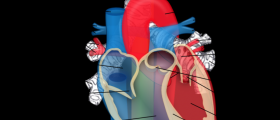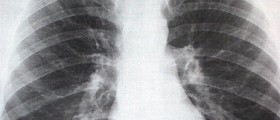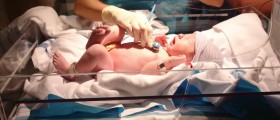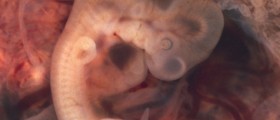
What is Aortic Aneurysm?
An aortic aneurysm is a condition characterized by an enlargement of the aorta at least 1.5 times its normal size. The swelling of the aorta is a signal that its wall is damaged. The mere growth of the aorta does not produce discomfort per se, but there is an increased risk of rupture. If the aorta happens to tear there will be severe pain accompanied by internal bleeding, and if medical help does not arrive in a timely manner, death occurs swiftly. In addition, there are a few types of aortic aneurisms distinguished by the area where the swelling takes place. For instance, abdominal aortic aneurysm, which is the most frequent type of the condition, takes place on the abdominal part of aorta. Also, the thoracic aortic aneurysm is located in the upper part of the aorta, but it should be noted that aneurysms could show up anywhere. As far as the signs and symptoms go, in the early stages there are usually none, but as the aneurysm gets bigger it starts to generate pain. Depending on where the aneurysms appear, it is often the case that when the nerve roots are squeezed this can lead to leg numbness and discomfort. In some instances, the blood clots that forms inside the aneurysms can get separated and lead to an embolus. Other symptoms may include vomiting, nausea, rapid heart rate, and anxiety. Without proper treatment aneurysms grow bigger but the rate of their progression is difficult to estimate. When it comes to diagnosing aneurisms, image scanning is employed in order to make proper identification.
Types of Aortic Aneurysm
Aorta is the primary blood supplier in the body and it stretches from the heart and chest through to the abdomen. Consequently, if it ruptures due to an aneurysm, the consequences can be life threatening. As previously mentioned, aortic aneurysms can occur in many places, but there are some areas where they are more common than others. Aneurysms can start to grow anywhere along the aorta, and those which develop in the upper parts are called thoracic, while those that start in the lower area are termed abdominal. Aneurysms in the lower portion of the aorta are more common while it infrequently happens that they develop somewhere in the middle. Further, abdominal aortic aneurysm is very frequently observed for a couple of reasons. First, the amount of load bearing protein from the wall of the aorta is lower in the abdominal part than in the thoracic, for example. At the same time, the abdominal part of aorta is not as capable of repair as some of the other ones are. Abdominal aortic aneurysm is a characteristic of older people, and the risk of developing the condition increases as individual ages. For the most part the abdominal aortic aneurysm does not reveal any symptoms, which makes it particularly threatening, as it only appears once the aorta splits open. If the aorta swells up to 5 cm in diameter there is a strong possibility that it will burst, but this is unique from case to case as there are instance of ruptures when the aorta reaches 15 cm. The rupture of the aorta is easily diagnosed through ultrasound or a CT scan while signs other than pain include free-floating fluid in the abdomen, kidney, and diaphragm area. In addition, there are some estimates that assert that only about 10 to 25 percent of individuals live through the rupture of an abdominal aortic aneurysm because the rate of post-operative mortality is immensely high. The abdominal aortic aneurysm death rate is the highest of all other areas affected. Further, thoracic aortic aneurysm is manifested through a bump in the upper part of the aorta. Similarly to the abdominal, the thoracic aortic aneurysm does not produce any symptoms. If the aneurysm is discovered before the rupture it is either carefully monitored in instances in which it is considered miniature or an individual is advised to undergo emergency surgery. Once the rupture occurs surgery is very risky, just as it is dangerous with the abdominal aortic aneurysm. It should be noted that there are cases of aortic aneurysms that never rupture due to the fact that they remain small. If a small aneurysm is discovered, it will be closely monitored but it is difficult to predict the pace at which it will grow. In any case, signs that an aneurysm is growing include back pain and discomfort or pain in the chest and abdomen area. Also, medical professionals constantly advise that individuals with family history of aortic aneurisms need to go through regular check-ups in order to make sure they are not at risk. Ultrasound exams are most often employed for routine screening for aneurysms.
Treatment Methods for Aortic Aneurysm
Surgery is the primary type of treatment for aortic aneurysms. As some never grow big enough to be threatening many individuals never remove them. Smaller aneurysms are in most cases kept in check through blood pressure medications. As is the case with any type of medical concern, eating healthy and exercising on a regular basis are always recommended.
- www.cdc.gov/heartdisease/aortic_aneurysm.htm
- www.nhlbi.nih.gov/health/aortic-aneurysm
- Photo courtesy of Patrick J. Lynch, medical illustrator by Wikimedia Commons: commons.wikimedia.org/wiki/File:Aorta_normal_descending_tee_view.jpg

















Your thoughts on this
Loading...